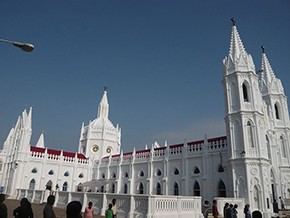Two faiths, one shrine

The Syrian city of Saidnaya is a place of ancient holiness. Reputedly the Virgin Mary appeared to the Emperor Justinian in the sixth century requesting not only that a church be built there in her honor but also supplying a detailed architectural plan. Saidnaya remains highly popular with pilgrims—with Christians, of course, but also with many Muslims who come on Fridays to pay their respects to the Virgin. Believers of both kinds come for healing, women usually in quest of healthy pregnancies.
Such dual use might puzzle American or European Christians. Surely, we think, shrines are sacred to particular faiths—Lourdes for Catholics, Mecca (very strictly) for Muslims. But that exclusive attitude reflects Europe’s distinctive religious history, in which Christianity was for centuries the only religion in the landscape, or at least an overwhelming majority force.
In the rest of the world, religions have rarely enjoyed such a monopoly and have commonly shared sacred space. In India and Pakistan, Muslims and Hindus are both to be found at the shrines of the great Sufi sheikhs. One of India’s most beloved shrines today is the (Catholic) Basilica of Our Lady of Good Health at Vailankanni, which attracts pilgrims of all faiths, some two million a year. It would be downright rude to inquire into the religious credentials of a fellow pilgrim.




